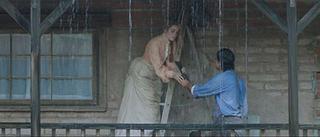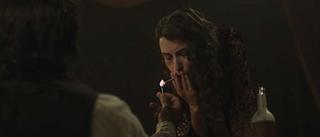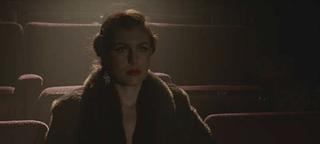The Versatility of Effect Lighting
There are a few categories or functions of light when calling for a specific unit to be used in a scene. The director of photography starts most importantly with the story, what is going on in a particular scene, and looks at what sources are available in the space. Lighting does not always have to be motivated, but beginning with what is naturally lighting up the space is a good place to start.
Besides the key, whatever fill, backlights or set lights the scene may contain, there are also sometimes effect lights that are placed to create a specific effect. This could be the light coming from a television screen, a projector, fire—the possibilities are endless. This is where believability comes into play in order to pull of the desired effect, though you may have physical fire in the shot, you may need to extend the effect of the fire to really paint the frame in the way you want to.
I have mentioned some effects in past columns, but thought I would touch on a few as I have found myself having to recreate them a lot lately. I have done video demos of some of these, and there are many ways to achieve them.
NATURAL EFFECTS
Natural effects include elements we encounter in nature. The key to creating these effectively for the screen, is observing them in life. It is natural for us as cinematographers to constantly be observing light in life and gaining an understanding of how it acts throughout the day and how changes in weather can affect it. Of course, it is quite simpler to pull these off on a stage where you have full control.

Fig. 1 When dealing with location exteriors, however, you have a whole new set of factors to deal with. One challenge that I thought was going to be difficult going in, turned out to be fairly simple, as most things do. Shooting a feature in Tucson, Ariz. during the summer, the script called for an exterior scene with overcast skies and rainfall during the hottest, sunniest day of our stay. Luckily my camera was facing the exterior wall of a building that had a porch ceiling built in. While making sure that no light leaks were coming through this ceiling, my key grip tied off a 12x12 rag of half grid to the corners of the ceiling and then onto hi rollers just off frame. This gave the soft, overcast look for the overall scene, which aids in the overall impression of a rainy day (Fig. 1).

Fig. 2 The other element present in at least half of that film was fire. We only had fire in the shot once and a while, but because there was no electricity in this world, the idea was that some kind of flame was lighting all the night interiors (Fig. 2). I knew if something appeared too hard, casting hard shadows, it would feel too “source-y” to be candlelight or some type of chandelier. Controlling the quality of my units was key, as they were all essentially extensions of fire. The softer they are, the better, but every cinematographer will find the “sweet spot” with making it believable for every scene. The same goes for something like moonlight, which I tend not to recreate, but if I do for a scene or a film, the softer and bigger I can make it, the more the audience buys it as moonlight. I tend to bounce large HMIs off a rag like ultrabounce, and spread it as much as I can so it does not fall off. There are many right ways to do these effects though. If you look at a DP like Robert Richardson, ASC, his moonlight is hard, a beautiful edge, and we completely buy it.

Fig. 3PRACTICAL EFFECTS
Effects we ourselves have created in life are easy to pull off for camera. For a music video a while back, we had to turn a theater used strictly for live performance, into an old movie theater. This involved recreating some screen effect as a key, with a change in frequency as if there were cuts and movement in the film happening, as well as some sort of projector (Fig. 3). Now, in real movie theaters, you are not backlit as an audience member by the projector, but it looks great elein the movies when the character has a little edge from it. For this key, just as I would do a television screen, I bounced something like a Leko off of a 4x4 bead board bounce and had it on a 1K hand dimmer. Another Leko was the projector, as it plays well with haze, being so directional. There are many ways you can pull this off. It is all in the understanding of how these things play in real life, and knowing how far you can push the effects in terms of intensity and hardness.
There are so many practical effects we have to create and extend in our work—streetlights, traffic lights, city lights, lights from vehicles… the list goes on. The more you can observe and experiment with these between shows, the better. Asking what other cinematographers, gaffers and key grips do is also very helpful, as it expands your toolkit and ideas. You won’t always have the same equipment on every show, so being able to do effects with different tools is a plus.
Julia Swain is a cinematographer based in California. She shoots on a variety of formats, seeking to create compelling visuals for every story and brand. She can be contacted throughTV Technology.
Get the TV Tech Newsletter
The professional video industry's #1 source for news, trends and product and tech information. Sign up below.












